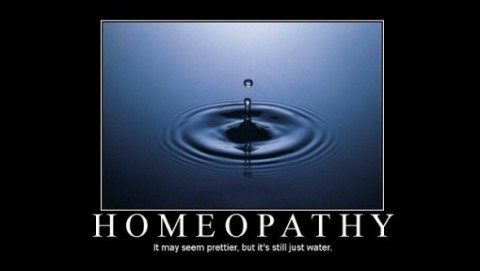
If a health professional that you trust also sells pseudoscience, does it matter to you? That’s a question that I have asked myself for several years as I have watched pseudoscientifc products move from fringe to mainstream in retail pharmacies. Once rare, homeopathy is now easy to find in almost any pharmacy. Frustratingly, it is often shelved right beside actually medicine (i.e., products with active ingredients) and it’s understandable (and perhaps expected) that consumers may be confused, purchasing products that they believe are safe and effective, only to be sold a product with no plausible effectiveness and no medicinal ingredients at all.
In January I blogged about a survey by the Office for Science And Society at McGill University that showed two-thirds of Montreal pharmacies sell the placebo flu remedy Oscillococcinum. Now there’s a new study by a research organization on behalf of the Center for Inquiry that sought to understand consumer views on homeopathy, focusing on Oscillococcinum. The study gives some interesting insights into consumer knowledge about homeopathy, and the impact on health professionals like pharmacists.
In 2019 a research organization polled 1,000 US adults with an oversample of 200 adults from Washington DC to determine their perspectives on a range of topics regarding the sale of homeopathy. It was a telephone poll of registered voters, stratified geographically to represent the US population.
Views on pharmacies, alternative medicines, and the FDA
Consumers generally have favourable views of major drug stores, the FDA, and alternative medicine, with WalMart and CVS holding net popularity totals greater than the FDA.
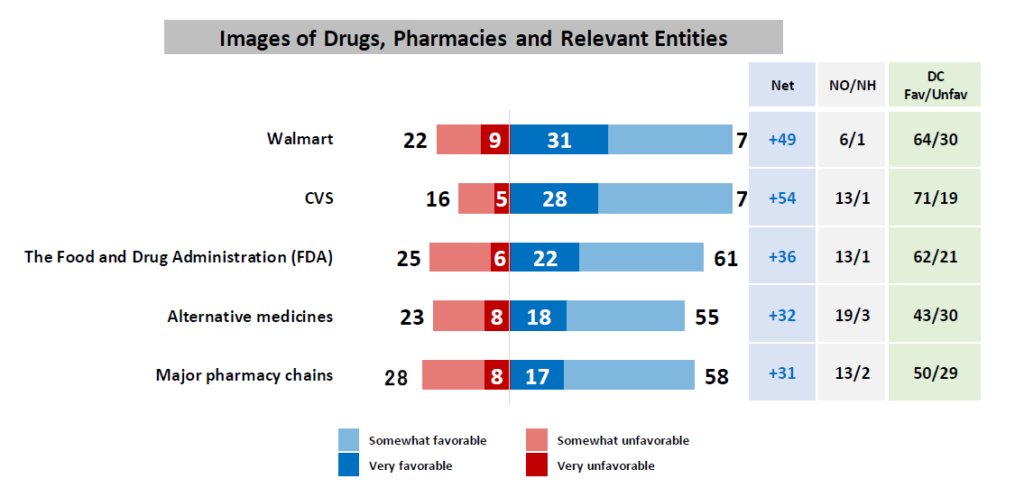
Most adults said that they trust their pharmacy to sell drugs that are safe and effective:
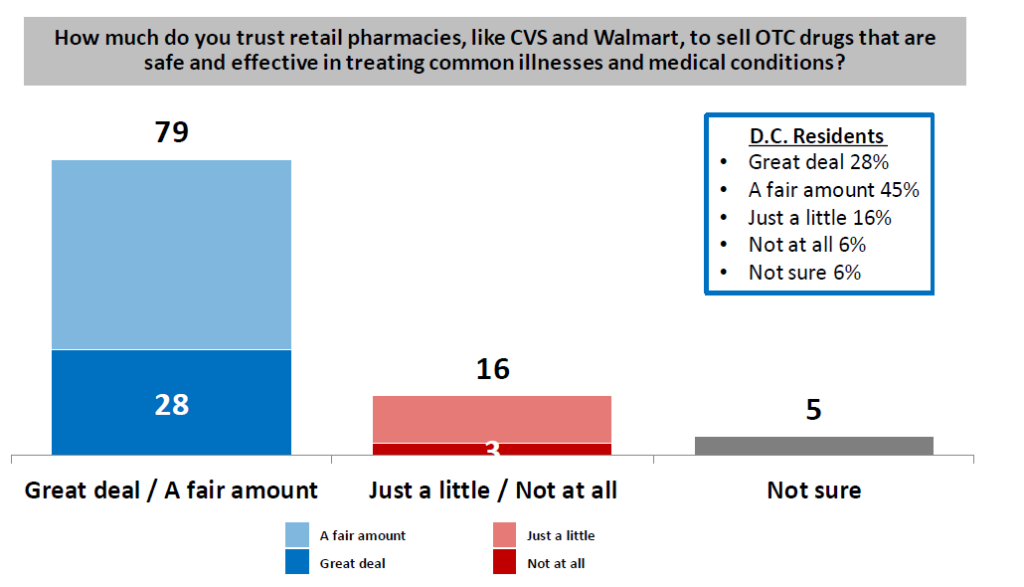
When asked about the relative safety of homeopathy vs. conventional medical over-the-counter treatments, most people felt the products were equally safe, with almost 1 in 5 stating they were unsure:
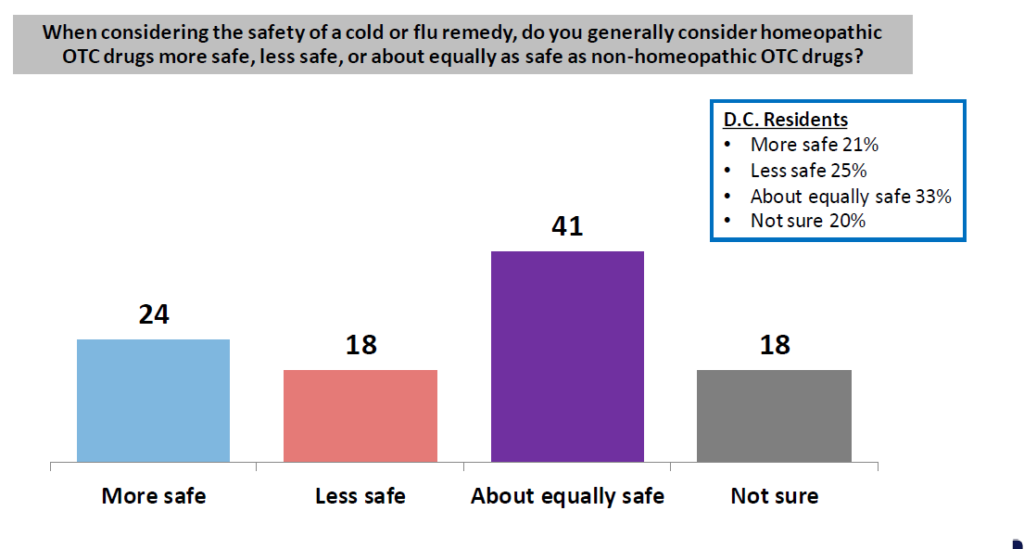
Similar views were expressed about effectiveness: notably, more felt that homeopathic remedies were less effective.
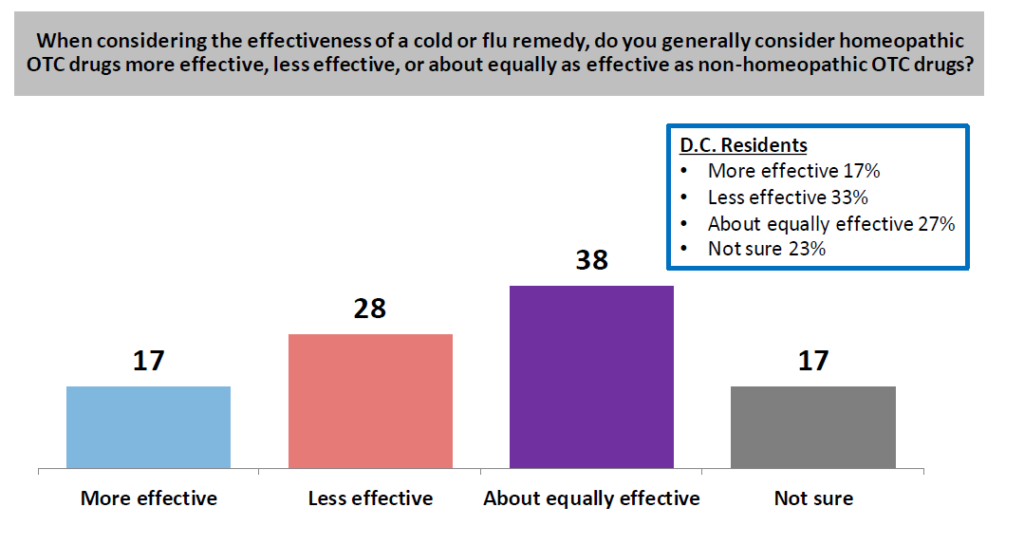
Interestingly, 10% of adults report purchasing a homeopathic remedy when they meant to purchase actual medicine:

This is not surprising, as pharmacies tend to intermix homeopathy and conventional remedies on the shelf, as you can see from this photo I took in a local pharmacy:

Some of these products contain no medicine at all.
Next the survey examined perceptions and attitudes about the homeopathic remedy oscillococcinium, which you can see on the top shelf in the photo above. Considering the scenario of a child with a cold or flu, respondents were asked about the effectiveness of oscillococcinum, based on the description on the label. Most responded it was somewhat or very effective, and a third were not sure. Only 21% rated it not effective:
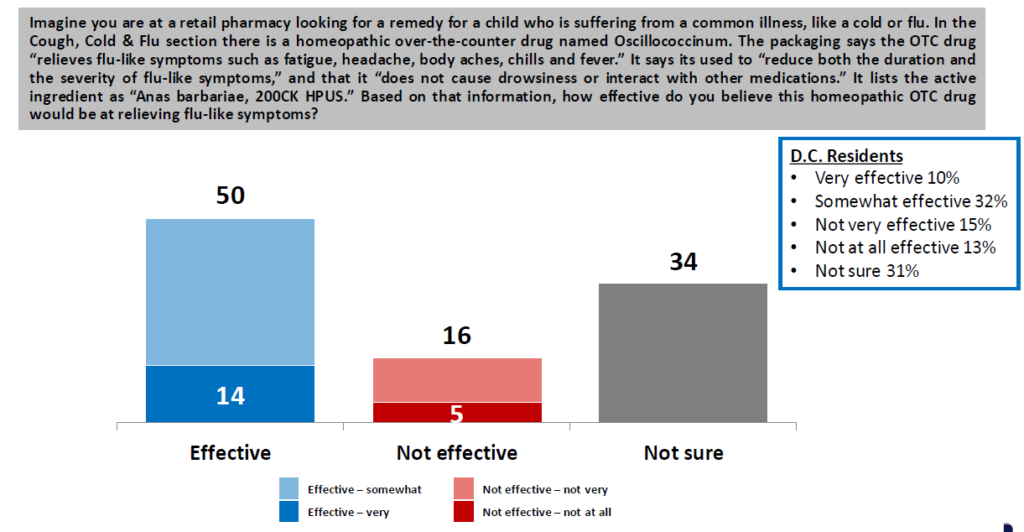
57% considered it to be safe, and 29% were unsure.
Over 40% said that based on the product information that they would likely purchase oscillococcinum for a child suffering from a cold or the flu:
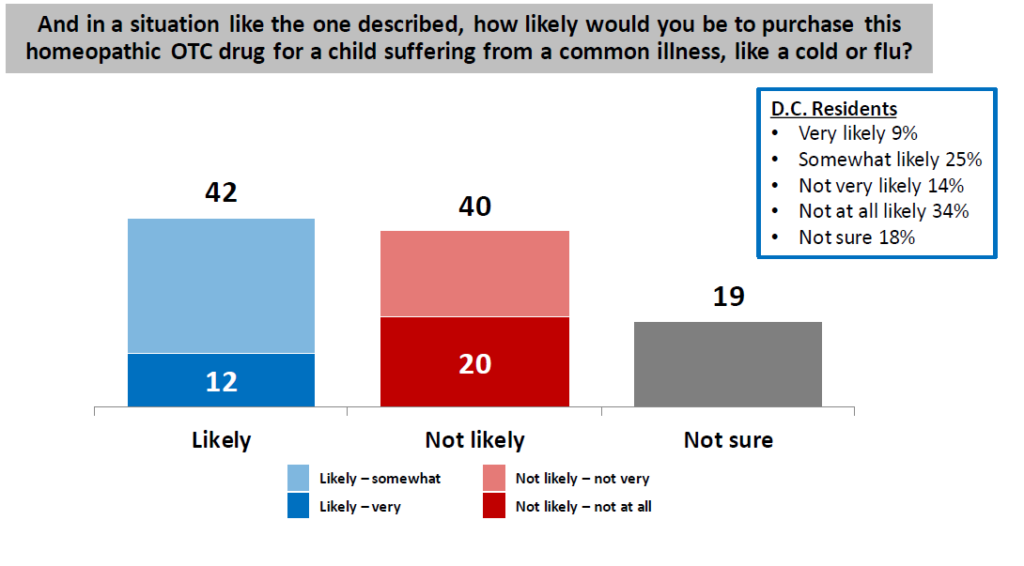
And most felt it was reasonable to shelve oscillococcinum in the pharmacy along with the other cough and cold products, just as is done in the pharmacy photo above.
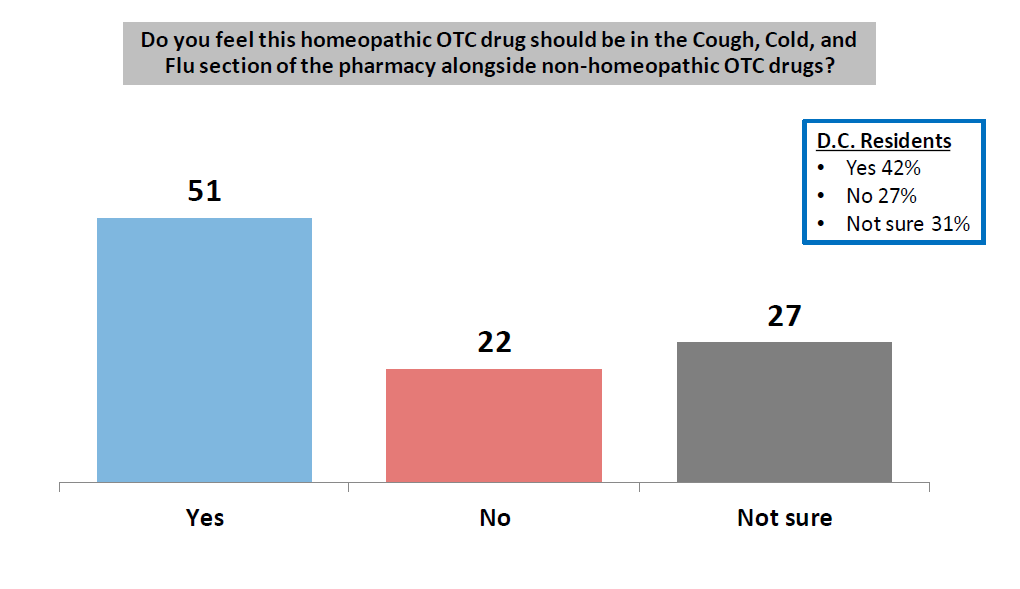
What happens when consumers learn the facts about homeopathy?
Oscillococcinum is prepared by decapitating a barbary duck, taking 35 grams of its liver and 15 grams of its heart and fermenting it for 40 days:
The fermented duck (“Anas barbariae“) broth then undergoes serial dilutions (1 part in 100) 200 times in a row (i.e., 200C). The final dilution is dripped on tablets of lactose and sucrose. 200C is seriously “potent” in homeopathy-speak. It’s been noted that in order to obtain even a single molecule of the original fermented duck, a volume of tablets greater that the mass of the entire universe would need to be consumed. Here is a table showing just how dilute it is:
It is mathematically impossible that there is any of the original fermented goo in the final product. Yet you might not know any of that if you read the packaging.
Back to the survey. When asked, only 1% of respondents knew what Anas barbariae actually is. Most had no idea what the “active ingredient” in the product is supposed to be:
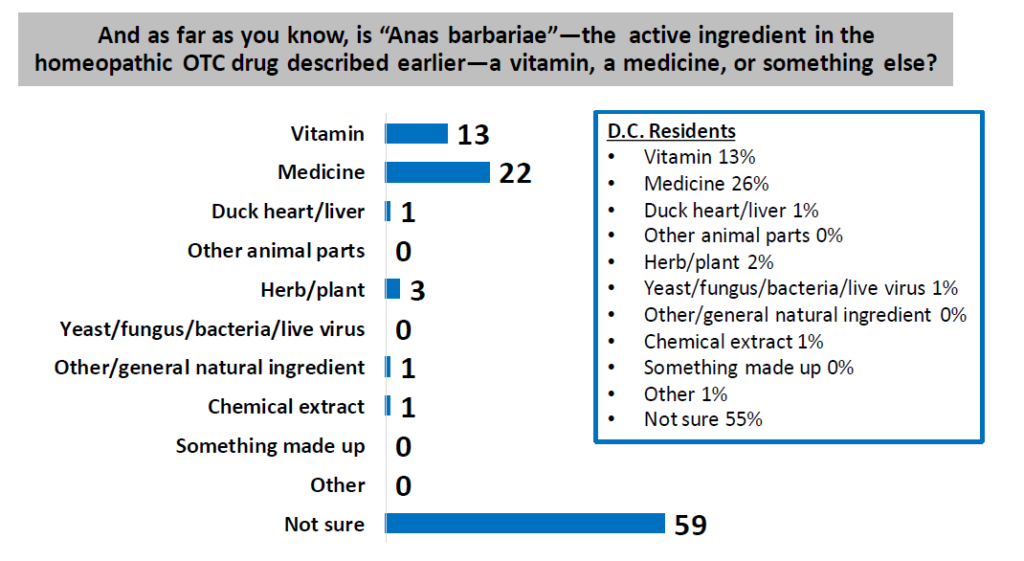
After being told what the 200C potency actually means, positive opinion about homeopathy starts to shrink:
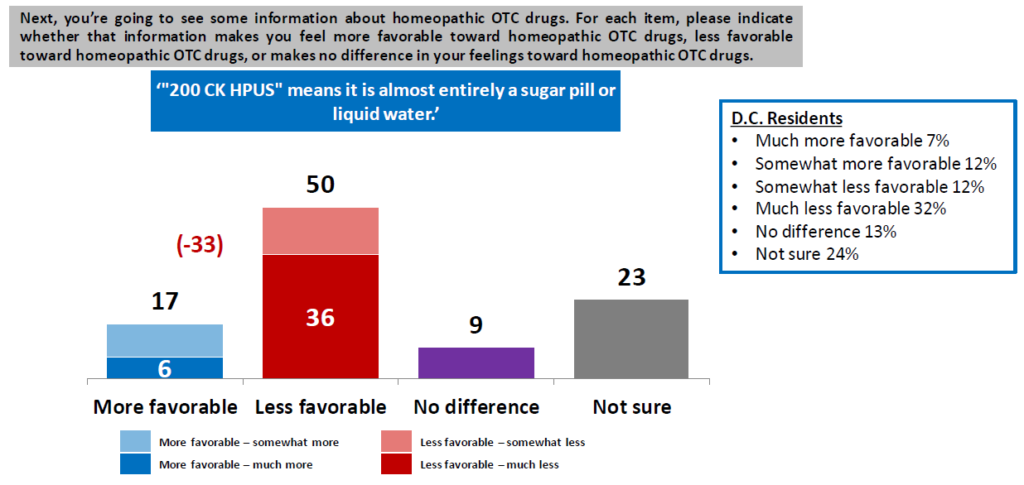
And opinion about the product continues to drop when respondents learn that homeopathy is based on the claim that the more a product is diluted, the stronger the activity is:
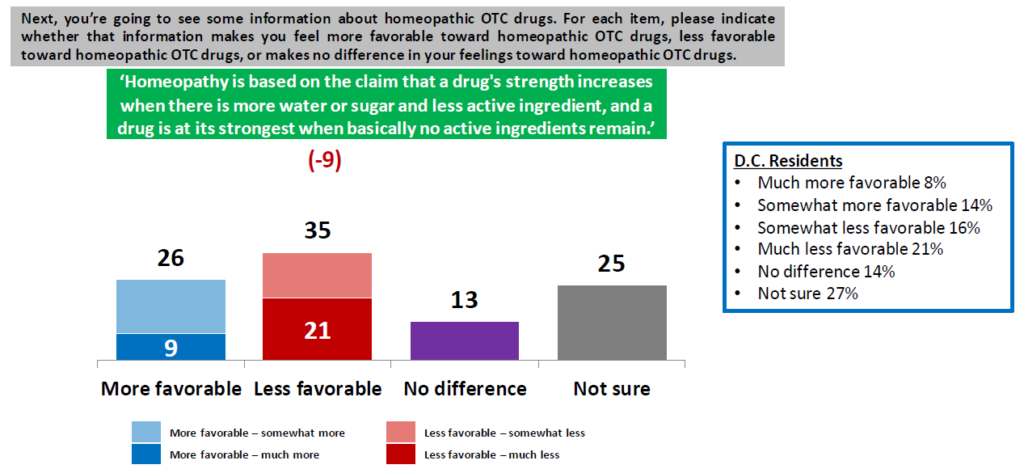
When asked again, positive perceptions about oscillococcinum drop overall by 15%, to 35% with 44% now considering it not effective. Positive perceptions go down across all adults and groups:
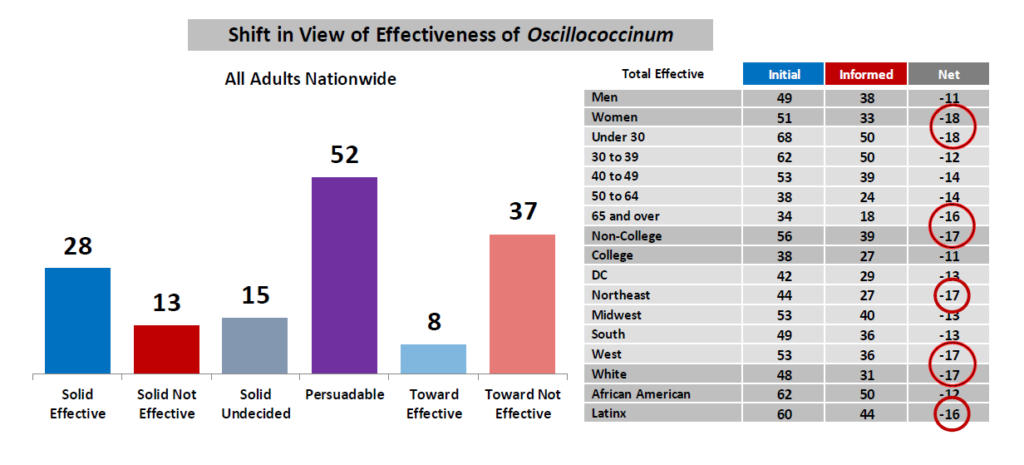
After hearing what Anas barbarie actually is, perceptions are much less favourable about oscillococcinum:
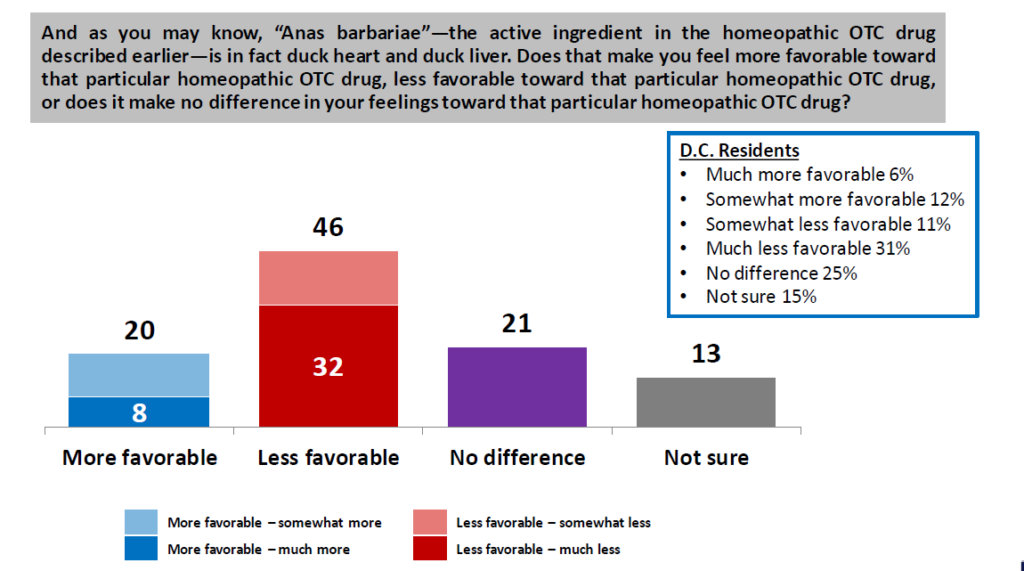
Opinions were divided on whether or not homeopathic products are properly labelled. 31% agreed it was misleading/deceptive to sell homeopathy next to actual medicine. 26% felt that homeopathy should be sold alongside non-homeopathy:
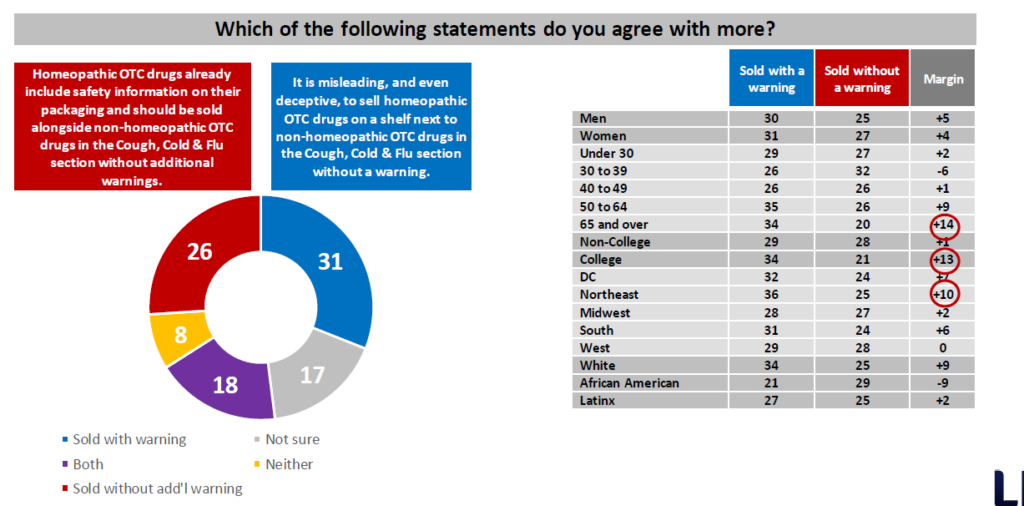
When asked, a solid majority support the FTC’s recommendation that homeopathy be labelled to point out that there is no scientific evidence these products work:
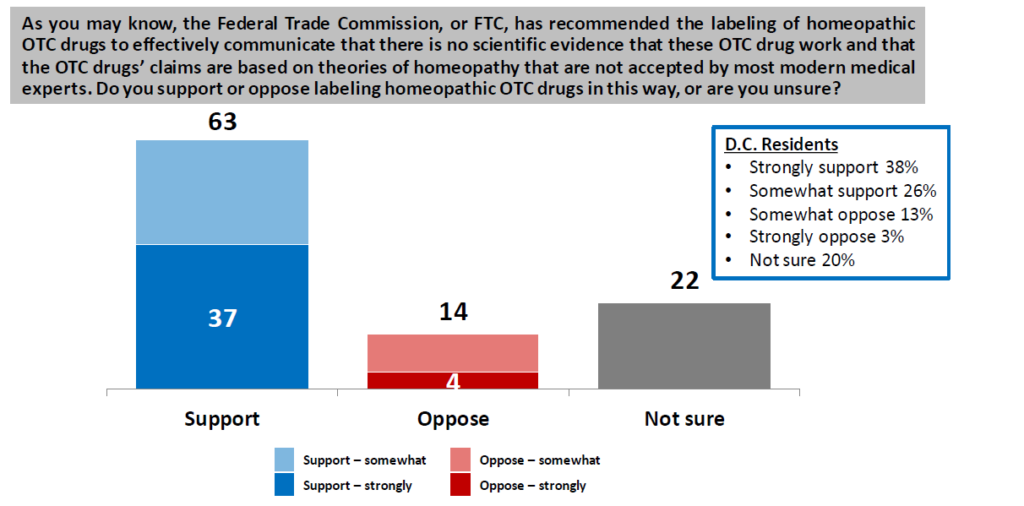
Finally, when asked how they would feel if they bought a homeopathic remedy for themselves or a child, 40% said “terrible/horrible/upset”, “cheated/deceived”, or “ripped off/scammed”.
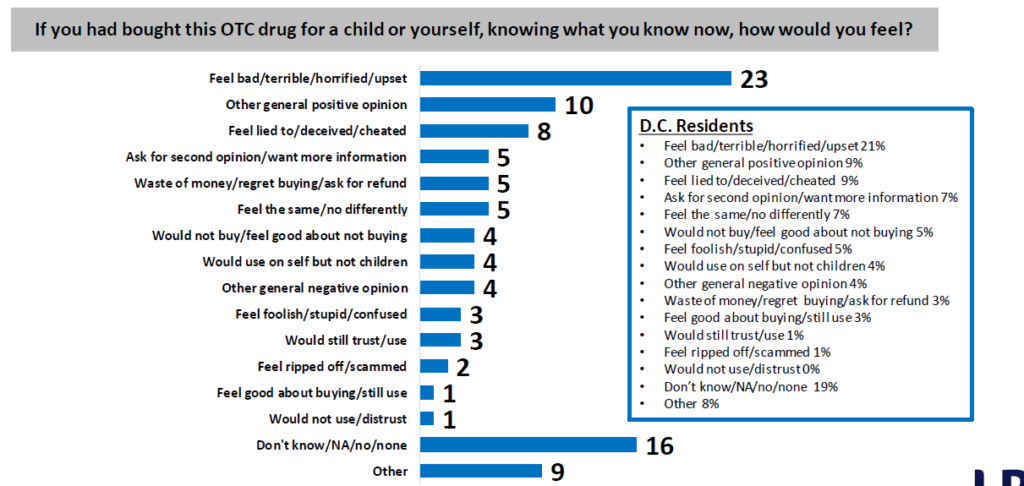
What does this survey tell us?
While most consumers trust pharmacies, very few people understand what homeopathy is and the nonsensical belief system it is built upon. Few consumers read and understand product labels well enough to identify which products are homeopathic. These generally positive views carry over to oscillococcinum, at least until people learn what the product is, and how it is made. Once consumers learn about homeopathy and products like oscillococcinum, positive perceptions deteriorate. Perceptions of efficacy and safety decline, and people are less likely to buy homeopathy once they learn what it actually is.
Homeopathy is a good example of the friction between the profession of pharmacy, and the business of pharmacy. Pharmacists are health care professionals, but pharmacies sell lots of nonsense that isn’t evidence based or credible – and the number of these products is growing. But pharmacies want customers, and stores want to satisfy customer demands. There is equally a strong interest by homeopathy manufacturers to get the veneer of credibility (and plausible consumer confusion) by packaging, labelling and marketing these drugs in pharmacies, just as if they are actually medicine. Regrettably, the growing amount of shelf space devoted to dubious products is climbing, pointing to the direction the business of pharmacy is moving, and perhaps unwitting dragging the profession of pharmacy along with it.



